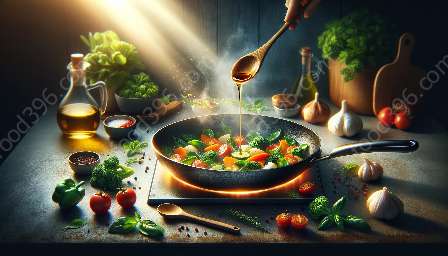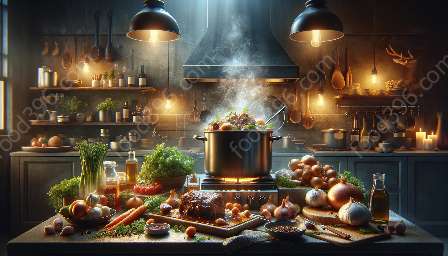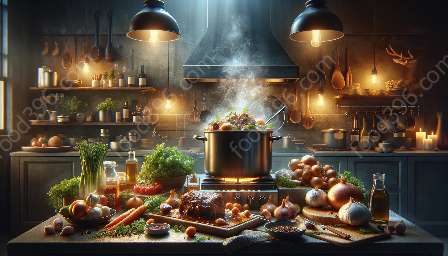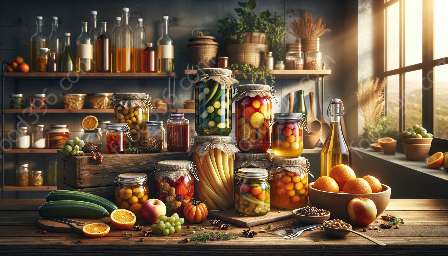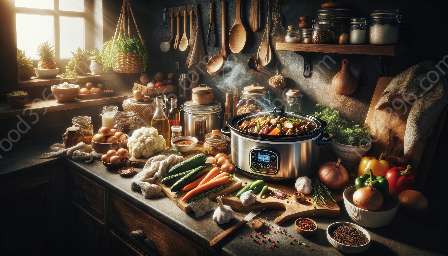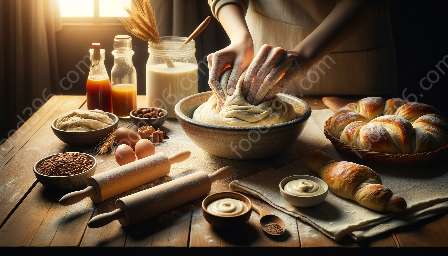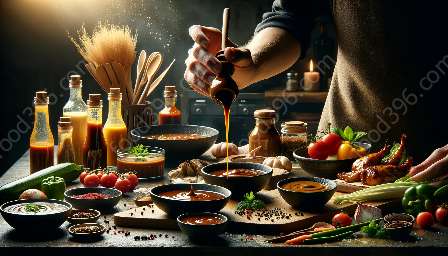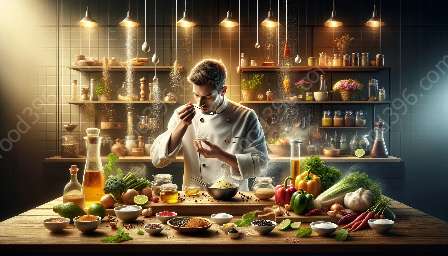Do you want to elevate your culinary skills and create mouthwatering dishes? Delve into the delightful world of sauce making and discover the perfect harmony of flavors that can transform a simple meal into a culinary masterpiece. In this comprehensive guide, we will explore the essence of sauce making, its compatibility with food preparation techniques, and how it enhances the overall experience of food and drink.
Understanding the Importance of Sauces
Sauces play a crucial role in the culinary world, as they have the ability to elevate the flavors of a dish and bring it to a whole new level. Whether it's a tangy barbecue sauce, a creamy béchamel, or a zesty chimichurri, sauces have the power to complement, contrast, and enhance the taste and texture of various ingredients.
The Basics of Sauce Making
Before diving into the intricate world of sauce making, it's essential to understand the fundamental building blocks of a great sauce. The primary components of most sauces include a liquid base, flavor-enhancing ingredients such as herbs and spices, and a thickening agent.
Common liquid bases for sauces can range from broth and wine to cream and tomato purée, each providing a unique foundation for flavor development. Moreover, the incorporation of aromatics such as onions, garlic, and herbs can infuse the sauce with distinct and aromatic notes, enhancing its profile.
Additionally, the proper incorporation of a thickening agent, such as a roux, cornstarch, or reduction, can help achieve the desired consistency for the sauce, whether it's velvety smooth or perfectly clingy.
Exploring Food Preparation Techniques
Understanding food preparation techniques is essential for mastering the art of sauce making. Whether it's sautéing, braising, or roasting, different cooking methods can yield complex flavors and textures, which provide a perfect canvas for the harmonious integration of sauces.
Sautéing, for instance, can create a caramelized base that complements the sweetness of a glaze or a reduction. Similarly, braising can tenderize meats and vegetables, allowing them to absorb the rich flavors of a savory sauce. Roasting, on the other hand, can develop deep umami notes in ingredients, serving as a worthy companion to a light and tangy sauce.
The Marriage of Sauces and Food & Drink
Sauces have the remarkable ability to enhance the overall experience of food and drink. They can bridge the gap between ingredients, bringing layers of flavor, texture, and aroma to a dish or a beverage. Whether it's a bold red wine sauce that complements a succulent steak or a refreshing citrus vinaigrette that brightens a refreshing salad, sauces can elevate even the simplest of ingredients.
Embracing the Diversity of Sauces
One of the most remarkable aspects of sauce making is the sheer diversity of flavors and textures that it encompasses. From classic French sauces such as hollandaise and velouté to international delights like Thai peanut sauce and Mexican salsa, the world of sauces offers an endless array of possibilities for culinary exploration.
Each culture and cuisine brings its unique blend of ingredients and techniques, resulting in an expansive spectrum of sauces that can cater to various palates and preferences. By embracing this diversity, one can embark on a flavorful journey that transcends boundaries and embraces the global tapestry of culinary artistry.
Conclusion
As you immerse yourself in the captivating realm of sauce making, remember that it is an art form that requires creativity, precision, and a deep appreciation for the interplay of flavors. By understanding the essence of sauces, their compatibility with food preparation techniques, and their ability to enhance the experience of food and drink, you can embark on a culinary journey filled with endless possibilities and delectable creations.



